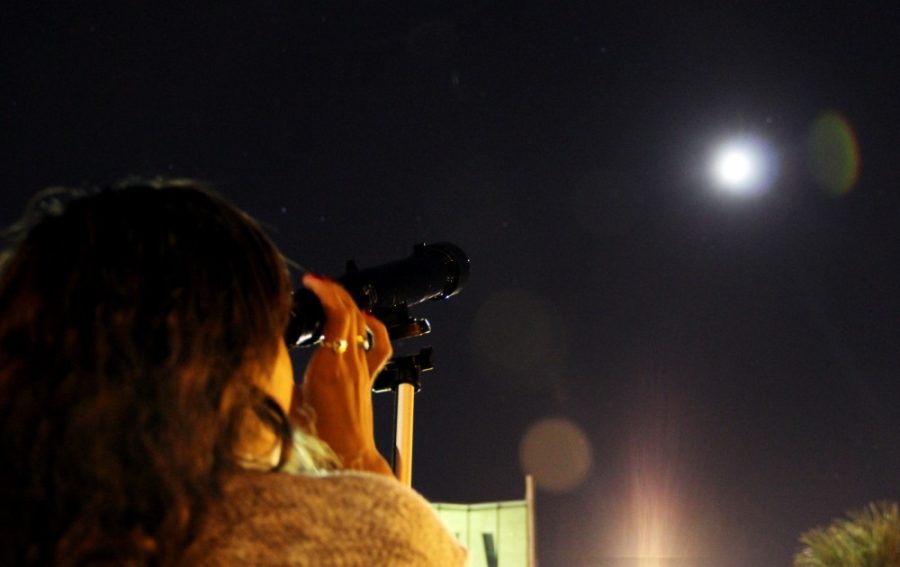Hundreds of people gathered on the UA Mall Saturday for International Observe the Moon Night.
The unofficial holiday, which is the brainchild of several NASA projects including the Lunar Reconnaissance Orbiter, is intended to “get people all around the world excited about looking at the moon,” said Sanlyn Buxner, the event’s organizer education specialist and research scientist for the Planetary Science Institute, a nonprofit organization headquartered in Tucson.
Along with the opportunity to look at the moon through a telescope, the event offered the public a chance to learn about the moon from volunteers who discussed the origin, composition, history of exploration and cultural relevance of our only satellite, Buxner said.
Buxner added that the best part of organizing such an event is seeing the volunteers, most of whom are UA students, interacting with the attendees, many of whom were children.
“I think it’s awesome to see these young students sharing their knowledge and their enthusiasm [about space] with the kids here,” Buxner said.
The Tucson Amateur Astronomy Association and the UA’s Lunar and Planetary Laboratory provided telescopes, which were positioned on the Mall to give observers a magnified view of Earth’s nearest neighbor.
Although it is visible with the naked eye, the moon is more enchanting through a telescope, said Stephen Kortenkamp, senior scientist for PSI and coordinator for the Teaching Teams Program at the UA’s Lunar and Planetary Laboratory.
“Just that view,” he said, “you’ve seen countless pictures in magazines and advertisements but to actually look through the telescope and see it with your own eye — it’s shocking.”
Believed by scientists to have originated when a large asteroid plowed into the Earth billions of years ago, dispersing huge amounts of debris that gradually grow into the sphere that it is today, the moon controls everything from the oceans’ tides to the rotational axis of the Earth, said Jim O’Connor, vice president of the TAAA.
O’Connor said he is fascinated by the lore and mythology surrounding the moon and the stars — noting that during the daytime, the universe is largely hidden from view, but at night “the storybook opens up.”
In addition to the viewing experience, the event was intended to educate the public on the importance of astronomy and science in general, said volunteer Becca Levy, a junior studying astronomy and physics who works for the public outreach department of the National Optical Astronomy Observatory.
“The point of this is [to show] that science is cool. Anyone can be a scientist — whether you’re male or female, young or old, it doesn’t matter,” she said. “So, I think that’s really the importance here … to get kids really interested in science because we need scientists to solve the world’s greatest issues.”
Inside Flandrau Science Center and Planetarium, the event offered hands-on activities for children, two talks by professional astronomers and a laser light show set to Pink Floyd’s, “The Dark Side of the Moon.”
One of the speakers at the event was Robert Strom, a professor emeritus for the UA’s Department of Planetary Sciences who participated in several of NASA’s Apollo missions during the late 1960s and 1970s. Strom emphasized the importance of teaching younger generations as well as the public at large about the solar system.
“They ought to know where they live,” he said. “I think it’s important that they understand the Earth and the moon and their place in the solar system.”
– Follow Mark Armao @MarkArmao









